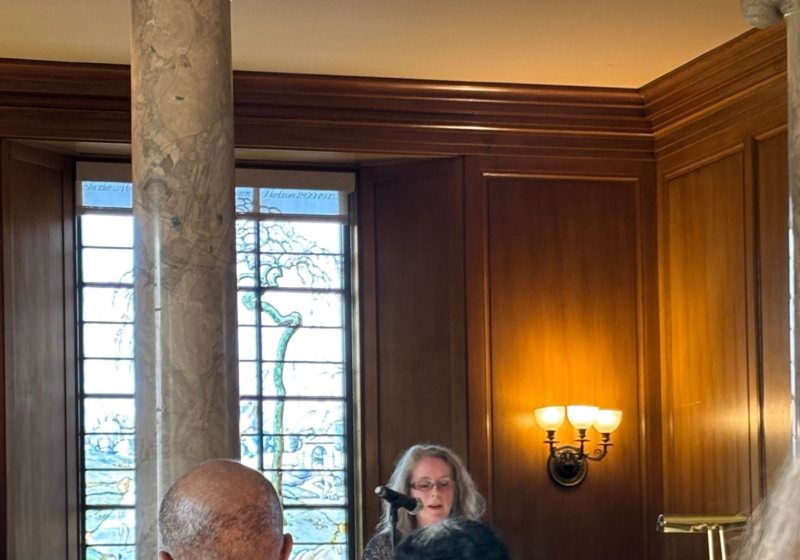Whether you live on or off campus, you know what people mean when they say “the bridge.” The South River Corridor Pedestrian Bridge, as it’s properly called, is the footbridge that connects the River Campus to Brooks Landing, allowing students to walk to and from campus and the 19th Ward easily every day.
Built in 1991, the bridge was constructed “as part of the Genesee South River Corridor Plan to help revitalize the Brooks/Genesee area by providing convenient access for the students to the commercial area of Brooks/Genesee,” according to Mark Johns, senior landscape architect at Bergmann Associates, an architectural firm based in Rochester that helped design the structure.
It was a necessity to connect pedestrians and bicyclists from either sides of the Genesee River, as only the Elmwood Bridge was available at the time for people around campus to cross the river.
“[It] was just a vehicular bridge [at the time], not that inviting or accommodating to pedestrians and bicyclists at the time,” Johns said, though it has since been remodeled to be more pedestrian- and bicycle-friendly.
“It was a unique tri-partnership between the City of Rochester, Monroe County, and the University of Rochester,” Johns added. “New York State also contributed funding for the bridge and trail.”
As to why the pedestrian bridge curves at the end and doesn’t just go immediately down, it has to do with the Americans with Disabilities Act regulations for accessible walking surfaces.
Specifically, “walking surfaces must have running slopes not steeper than 1:20”—a one-foot rise in 20 feet of walkway—according to the ADA website.
If the bridge were to continue down straight, “it would have brought it down into the building of the Plymouth Gardens,” Johns said.
Another reason for the curve is that “the turn at the end brought it to the intersection of Plymouth Avenue and Brooks Avenue that existed before the Brooks Landing project eliminated the section of Plymouth that ran south to Elmwood along the river,” Johns said.
If you’ve ever walked down the bridge towards Brooks Crossing, you might have noticed a plaque for an award the bridge won—The New York State Outstanding Civil Engineering Achievement, awarded in 1992 by the New York State Council and the American Society of Civil Engineers. The bridge won the award “due to its sleek aesthetic design and detailing,” according to Johns.
Another bridge that connects the University campus to the southwest Rochester neighborhood is the Erie Lackawanna Railroad Pedestrian Bridge, opened in the summer of 2012.
The bridge, originally constructed in the 1850s, was meant to carry the Rochester branch of the Erie Railroad, but has since been renovated as a footpath for pedestrians and bicyclists to use, and is even accessible under the ADA.
Both bridges offer an opportunity for students to easily get out of the bubble of campus and explore Rochester.




